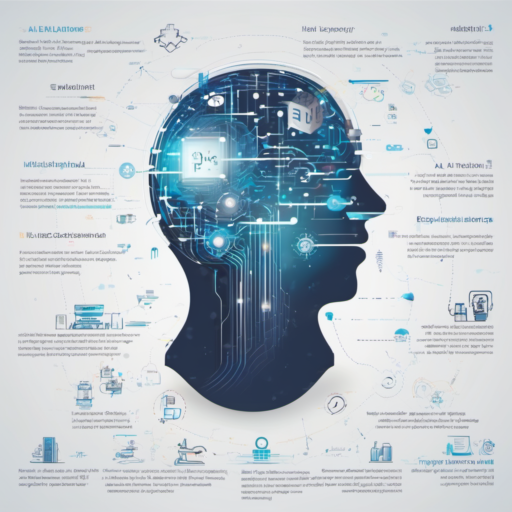Machine Learning Algorithms
Linear Regression:
Problem: Regression
Use Case: Foreseeing nonstop values, such as house costs or stock advertise trends.
Research Center: Direct relapse is foundational in measurements and ML, centering on show effortlessness and interpretability. Investigate frequently investigates regularization procedures like Tether and Edge relapse to avoid overfitting, particularly with high-dimensional data.
Logistic Regression:
Problem: Classification
Use Case: Twofold classification errands, such as e-mail spam location or restorative conclusion (e.g., foreseeing the nearness of a disease).
Research Center: Calculated relapse is esteemed for its probabilistic elucidation and is regularly improved with methods like regularization (L1 and L2) to make strides generalization and anticipate overfitting.
Decision Trees:
Problem: Classification, Regression
Use Case: Utilize cases where interpretability is pivotal, such as credit scoring or understanding diagnosis.
Research Center: Choice tree investigate centers on strategies to diminish overfitting (e.g., pruning), dealing with categorical factors, and progressing computational efficiency.
Random Forests:
Problem: Classification, Regression
Use Case: High-dimensional datasets and circumstances requiring strong execution, such as picture classification and bioinformatics.
Research Center: Improvements incorporate boosting strategies, include significance investigation, and taking care of imbalanced datasets. Investigate regularly investigates diminishing computational complexity and making strides gathering performance.
Support Vector Machines (SVM):
Problem: Classification, Regression
Use Case: Applications in content classification, picture acknowledgment, and bioinformatics where edge maximization is beneficial.
Research Center: Bit strategies for taking care of non-linear information, optimization methods for large-scale issues, and amplifying SVMs to multi-class classification problems.
K-Nearest Neighbors (KNN):
Problem: Classification, Regression
Use Case: Suggestion frameworks, peculiarity discovery, and picture acknowledgment where a non-parametric approach is advantageous.
Research Center: Strategies for dealing with high-dimensional information, making strides computational effectiveness, and upgrading remove metrics.
Naive Bayes:
Problem: Classification
Use Case: Content classification assignments like spam sifting, assumption investigation, and report categorization.
Research Center: Expansions to handle conditions between highlights, changes in probabilistic modeling, and crossover approaches with other calculations for superior performance.
Gradient Boosting Machines (GBM):
Problem: Classification, Regression
Use Case: Structured/tabular information assignments, such as extortion location, chance modeling, and positioning problems.
Research Center: Optimizing learning rates, misfortune capacities, and upgrading parallel handling capabilities. Investigate too investigates regularization methods to decrease overfitting.
Bag of Words (BoW):
Natural Language Processing Algorithms
Problem: Content Representation
Use Case: Straightforward content classification, subject modeling, and estimation analysis.
Research Center: Making strides vectorization strategies, taking care of sparsity, and joining semantic information.
TF-IDF (Term Frequency-Inverse Archive Frequency):
Problem: Content Representation
Use Case: Data recovery, look motors, and content classification.
Research Center: Improvements incorporate way better term weighting plans and joining with other highlights for moved forward performance.
Word2Vec:
Problem: Word Embeddings
Use Case: Semantic examination, capturing word connections and analogies.
Research Center: Progressing preparing calculations (e.g., Skip-gram, Persistent Sack of Words), investigating vector number-crunching, and taking care of out-of-vocabulary words.
GloVe (Worldwide Vectors for Word Representation):
Problem: Word Embeddings
Use Case: Capturing worldwide co-occurrence measurements for word similitude tasks.
Research Center: Improving the proficiency of preparing on expansive corpora and coordination with other implanting strategies for wealthier representations.
BERT (Bidirectional Encoder Representations from Transformers):
Problem: Contextualized Embeddings
Use Case: Pre-trained dialect models for errands like address replying, named substance acknowledgment, and content classification.
Research Center: Fine-tuning for particular errands, expanding to bigger datasets, and creating more effective preparing and deduction methods.
Convolutional Neural Systems (CNN):
Deep Learning Algorithms
Problem: Picture Acknowledgment, Video Analysis
Use Case: Protest location, picture classification, and facial recognition.
Research Center: Upgrading convolutional layers, investigating distinctive models (e.g., ResNet, Initiation), and moving forward highlight extraction and exchange learning.
Recurrent Neural Systems (RNN):
Problem: Grouping Prediction
Use Case: Time arrangement estimating, characteristic dialect handling, and discourse recognition.
Research Center: Tending to vanishing angle issues, improving memory capacity with structures like LSTM and GRU, and making strides grouping modeling.
Long Short-Term Memory Systems (LSTM):
Problem: Grouping Prediction
Use Case: Taking care of long-term conditions in errands like discourse acknowledgment, machine interpretation, and time arrangement forecasting.
Research Center: Optimizing entryway instruments, lessening computational complexity, and upgrading preparing stability.
Generative Antagonistic Systems (GAN):
Problem: Generative Modeling
Use Case: Picture era, deepfake creation, and information augmentation.
Research Center: Stabilizing preparing, upgrading generator and discriminator designs, and investigating applications in different spaces (e.g., craftsmanship, medicine).
Transformer Networks:
Problem: Sequence-to-Sequence Modeling
Use Case: Dialect interpretation, content era, and large-scale dialect models (e.g., GPT-3).
Research Center: Creating more effective consideration components, scaling models to handle gigantic datasets, and moving forward preparing efficiency.
Autoencoders:
Problem: Dimensionality Decrease, Irregularity Detection
Use Case: Information compression, commotion decrease, and irregularity location in pictures and time series.
Research Center: Improving encoder-decoder designs, joining with other models (e.g., GANs), and progressing inactive space representations.
Research and Exactness Considerations
Data Quality and Amount: High-quality, different datasets progress show preparing and execution. Methods like information increase and engineered information era (e.g., utilizing GANs) can improve dataset quality and size.
Feature Building: Distinguishing and creating significant highlights from crude information can essentially upgrade show exactness. This includes space information and methods like include choice and extraction.
Model Complexity vs Interpretability: Complex models like profound neural systems (DNNs) frequently accomplish higher exactness but may need interpretability. Adjusting complexity with the require for straightforwardness is vital, particularly in delicate applications like healthcare and finance.
Hyperparameter Tuning: Optimizing hyperparameters (e.g., learning rates, regularization parameters) through strategies like network look and Bayesian optimization can move forward demonstrate performance.
Ensemble Strategies: Combining numerous models (e.g., utilizing sacking, boosting, or stacking) can lead to superior execution and vigor. Methods like Irregular Timberlands and Angle Boosting are illustrations of successful gathering methods.
Research-Oriented Considerations
State-of-the-Art Models: Remaining upgraded with the most recent models and methods (e.g., transformers in NLP) guarantees leveraging cutting-edge headways for greatest accuracy.
Domain-Specific Alterations: Fitting models to particular spaces (e.g., restorative imaging, monetary determining) includes joining space information and customizing structures and highlights accordingly.
Transfer Learning: Utilizing pre-trained models on expansive datasets and fine-tuning them for particular assignments can spare computational assets and move forward execution. This is particularly compelling in NLP and computer vision.
| Domain | Research Topic | Description | Algorithms | Research Directions |
|---|---|---|---|---|
| ML | Supervised Learning | Predicting output labels based on input features. | Decision Trees, Random Forests, SVMs, k-NN, Naive Bayes, Logistic Regression, Gradient Boosting, AdaBoost, XGBoost, LightGBM | Enhancing model interpretability, handling imbalanced data, exploring ensemble methods, and novel architectures. |
| NLP | Sentiment Analysis | Determining sentiment (positive/negative) in text. | LSTM, BERT, GPT, Transformer-based models, FastText, TextCNN, VADER, TextBlob, Word2Vec, Doc2Vec, ELMo | Multilingual sentiment analysis, emotion detection, fine-tuning for specific domains, and transfer learning. |
| Deep Learning | Image Classification | Assigning labels to images (e.g., cat vs. dog). | CNNs, ResNet, Inception, VGG, MobileNet, DenseNet, EfficientNet, AlexNet, SqueezeNet, GoogLeNet | Transfer learning, object detection, adversarial robustness, and exploring lightweight architectures. |
| Generative AI | Text Generation | Creating human-like text sequences (e.g., chatbots, poetry). | LSTM, GPT, Transformer-based language models, SeqGAN, VAE, BERT, T5, CTRL, XLNet, RoBERTa | Improving coherence, controlling style, multimodal generation (text + images), and ethical considerations. |
This table provides a clear overview of the research topics within different domains, including their descriptions, relevant algorithms, and potential research directions.
Choosing the right calculation includes a point by point understanding of the issue at hand, the nature of the information, and the craved results. Adjusting precision with interpretability, computational productivity, and vigor is basic for creating viable machine learning arrangements.



